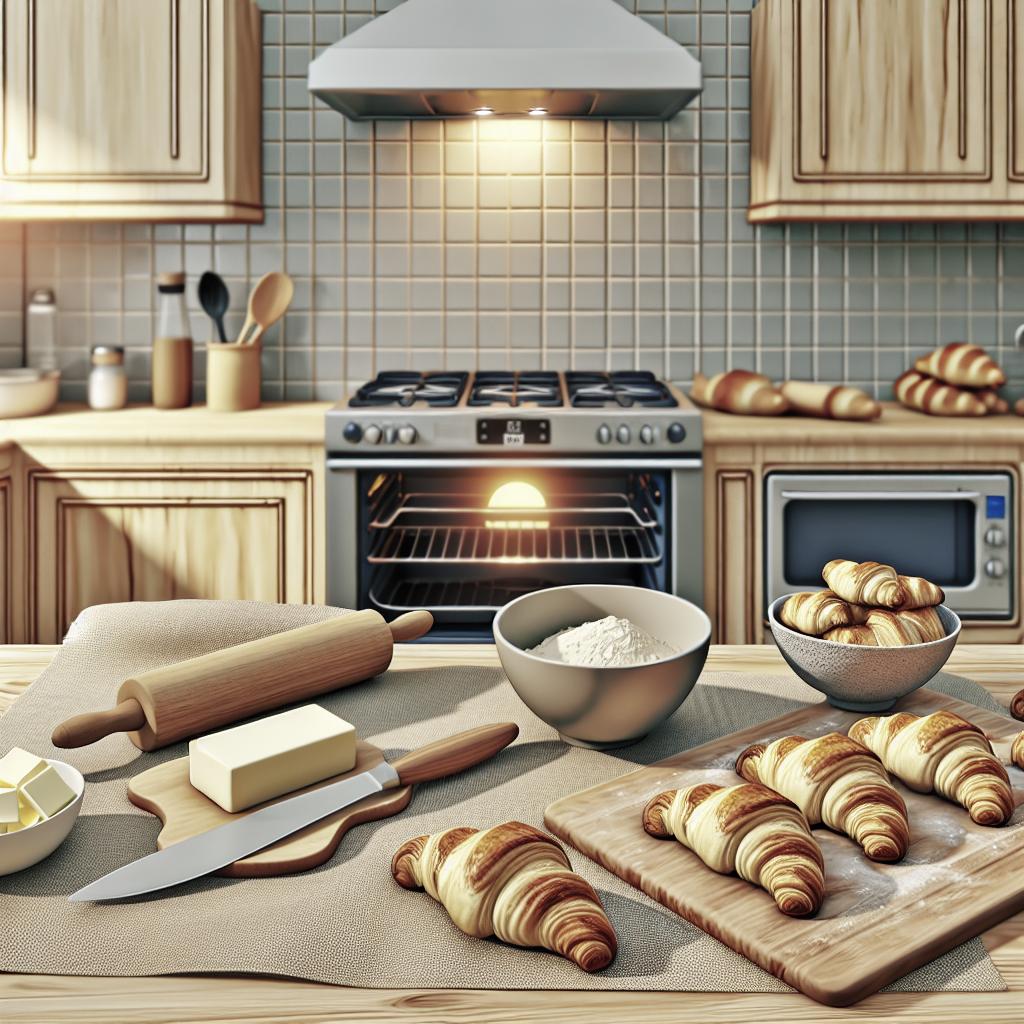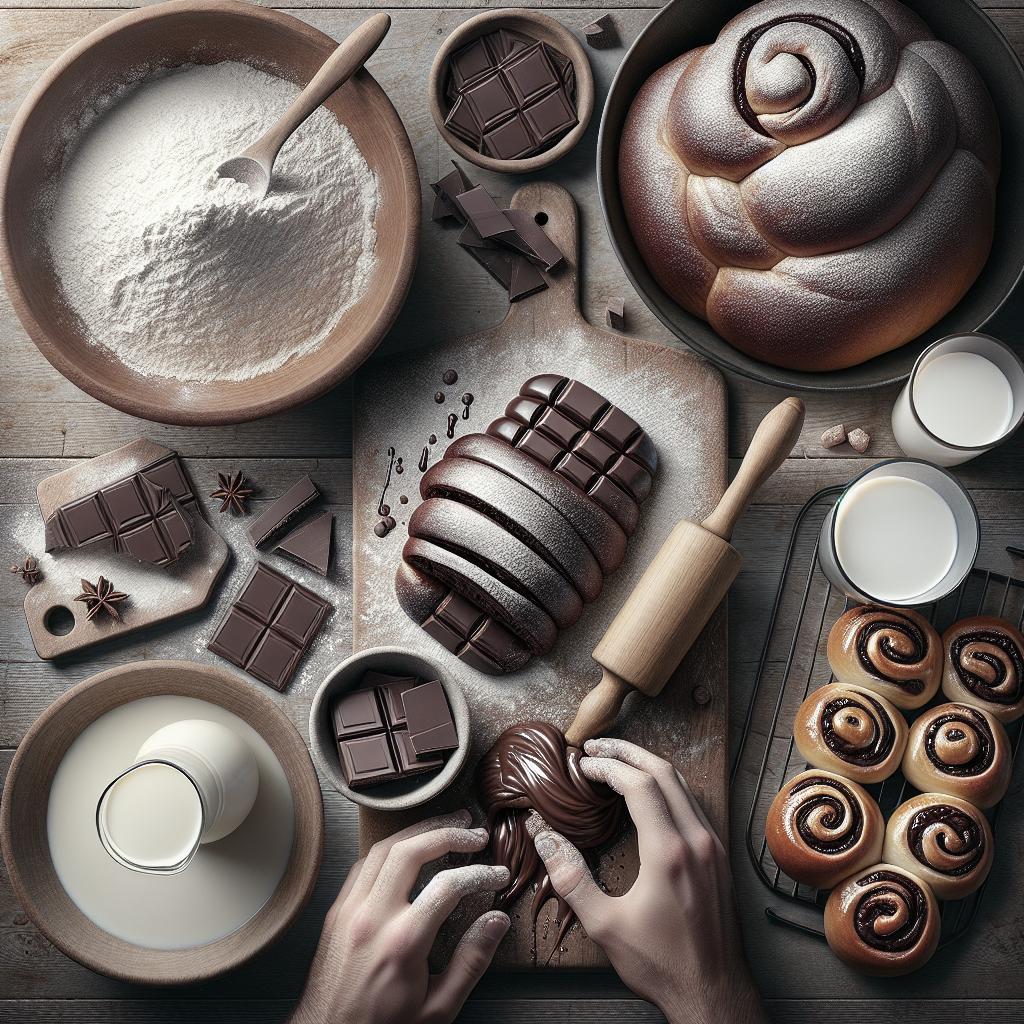<>
If you’re craving a piece of Parisian heaven, there’s no better way to transport yourself than by baking a fresh loaf of brioche. This traditional French bread is known for its light texture, rich flavor, and buttery aroma. In this blog post, we’ll guide you through a step-by-step recipe to create an authentic Parisian brioche. We’ll start with a detailed list of ingredients before moving on to the directions and tips to perfect your brioche-making skills. Whether you’re a newbie baker or a seasoned pro, this guide will help you achieve bakery-quality results right from your home kitchen.
Ingredients
Ingredients
The first step to making a delectable Parisian brioche is gathering the right ingredients. Quality is key, so try to use the freshest and best products available. Here’s what you’ll need:
- 500 grams (4 cups) of all-purpose flour
- 70 grams (1/3 cup) of granulated sugar
- 10 grams (2 teaspoons) of active dry yeast
- 8 grams (1 1/2 teaspoons) of salt
- 200 grams (7 ounces) of unsalted butter, softened
- 5 large eggs
- 120 ml (1/2 cup) of whole milk, warmed
- 1 egg yolk (for the glaze)
These ingredients work together to create a brioche dough that is both fluffy and rich, with a fine crumb and buttery flavor. Make sure your butter is at room temperature and your eggs and milk are warm but not hot, as this will help the yeast activate properly.
Directions
Method
Now that you have your ingredients in order, it’s time to move on to the actual preparation process. Follow these detailed steps to ensure a perfect brioche:
- Activate the yeast: In a small bowl, combine the warmed milk with the active dry yeast and a pinch of sugar. Stir well and let it sit for about 10 minutes until frothy.
- Mix the dough: In a large mixing bowl, whisk together the flour, sugar, and salt. Create a well in the center and add the yeast mixture along with the 5 eggs. Using a stand mixer fitted with a dough hook, mix the ingredients until a dough forms. Knead on medium speed for about 10 minutes until the dough is smooth and elastic.
- Incorporate the butter: Gradually add the softened butter into the dough, one piece at a time, ensuring each piece is fully incorporated before adding the next. Continue kneading for another 10–15 minutes, until the dough is shiny and stretches easily without breaking.
The next step is to let the dough proof properly, which is crucial for the brioche’s fluffy texture.
- First proof: Transfer the dough to a large, lightly greased bowl. Cover it with a clean kitchen towel and let it rise at room temperature for 1–2 hours, or until it has doubled in size.
- Chill the dough: Once doubled, punch down the dough to release the air, then cover the bowl with plastic wrap and refrigerate it overnight. This slow fermentation is key to developing the flavor.
- Shape the dough: The next day, remove the dough from the refrigerator and turn it out onto a lightly floured surface. Divide it into desired portions and shape into either a loaf or individual brioche buns. Place the shaped dough into loaf pans or on a baking sheet lined with parchment paper.
- Second proof: Cover the shaped dough and let it proof for another 1–2 hours at room temperature, or until it has puffed up and is slightly jiggly to the touch.
- Bake: Preheat your oven to 375°F (190°C). Brush the top of the dough with the egg yolk mixture for a shiny, golden crust. Bake for 20–25 minutes if making buns, or 30–35 minutes for a loaf, until the top is deep golden brown and a skewer inserted in the center comes out clean.
Notes
Add comment Cancel reply
A few helpful notes can make a world of difference when baking brioche. Here are some tips to consider:
- Butter consistency: Ensure your butter is truly soft but not melted. If the butter is too cold, it won’t incorporate smoothly; if too warm, it could make the dough too sticky.
- Proofing environment: A warm, draft-free area is ideal for proofing. If your kitchen is cold, consider turning on your oven light and placing the covered dough inside the oven to create a warm environment.
- Patience is key: Brioche dough is quite rich and takes longer to proof than regular bread dough. Don’t rush the process; good things take time!
If you’ve followed these steps and notes, you should be well on your way to enjoying fresh, homemade Parisian brioche. Don’t forget to share your baking adventures in the comments section below!
Leave a Reply
Final Thoughts
Making Parisian brioche at home may seem daunting, but with the right ingredients and a little bit of patience, you can achieve bakery-quality results. This detailed recipe, complete with tips and tricks, will guide you every step of the way. Remember, the key to a perfect brioche lies in the quality of ingredients and the time you invest in each step, from mixing the dough to proofing and baking. Bon appétit!
| Step | Details |
|---|---|
| Ingredients | All-purpose flour, granulated sugar, active dry yeast, salt, unsalted butter, eggs, whole milk, egg yolk for glaze |
| Method | Activate yeast, mix dough, incorporate butter, first proof, chill dough, shape dough, second proof, bake |
| Notes | Ensure butter consistency, create a warm proofing environment, practice patience |


